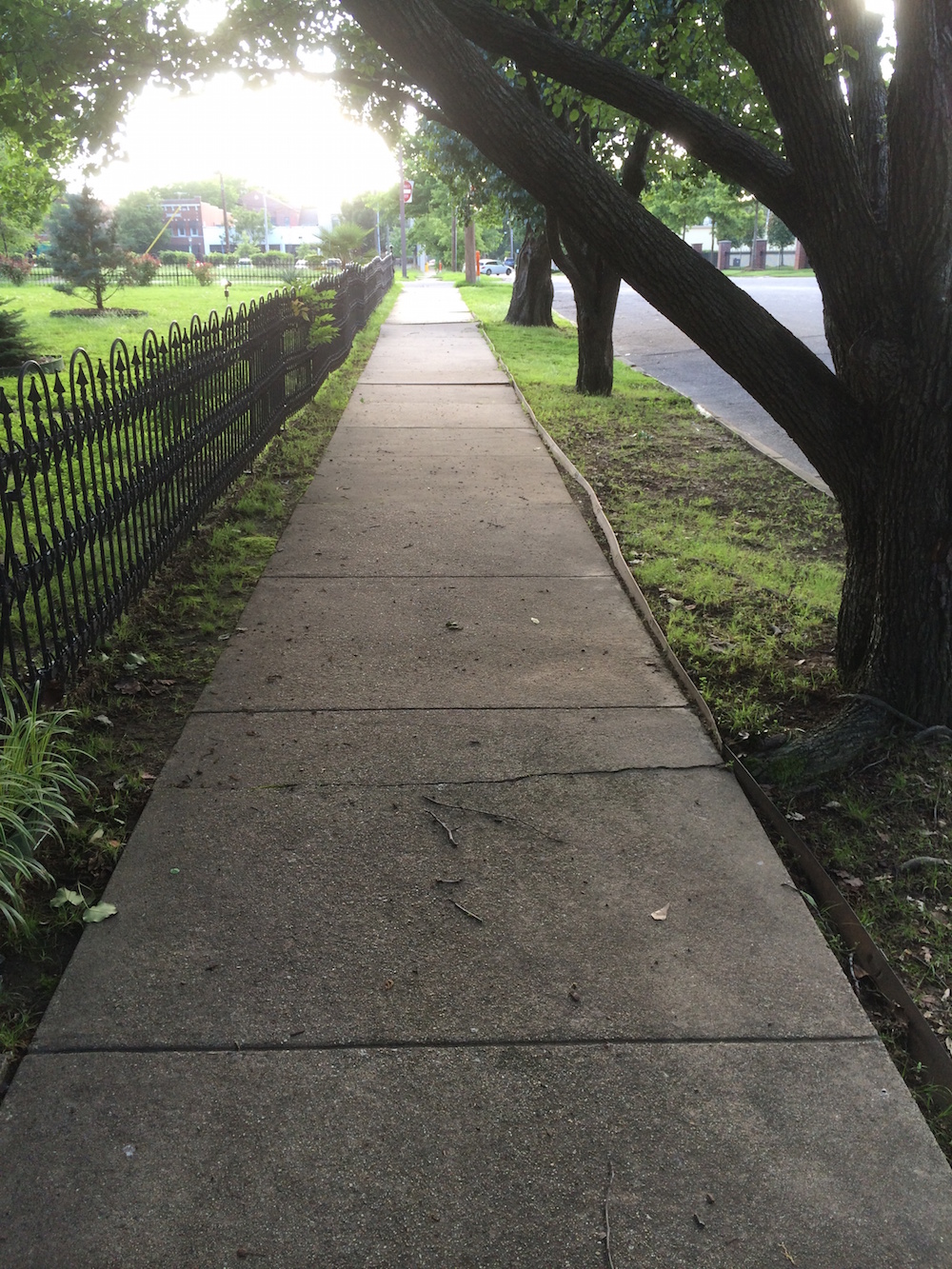 You don’t have to have a sidewalk to take a walk. One side of the street will do. A dirt road will do. The edges of your neighbors’ lawns might do, depending on the lawns and the neighbors. But those have other purposes. A sidewalk is a zone between where we live or work or shop and where we move in vehicles. It is made for walking.
You don’t have to have a sidewalk to take a walk. One side of the street will do. A dirt road will do. The edges of your neighbors’ lawns might do, depending on the lawns and the neighbors. But those have other purposes. A sidewalk is a zone between where we live or work or shop and where we move in vehicles. It is made for walking.
People were made for walking, too. On my fourth evening in a new home, I looked out the window and announced, to myself and the cat, “I’m going for a walk.”
I stuck a five and my driver’s license in a pocket and set out, thinking I might head over to MacArthur Park, past the Arkansas Art Museum to a trail that circles the pond where retired men fish and ducks panhandle. But somewhere between the Baptist church’s parking lot and the first corner, I knew my destination.
In the sidewalk-latticed neighborhood where I grew up, walking beyond my school or the houses of my friends was a mix of purpose and independence. Sometimes in the summer Mom would send me on an errand to Mrs. Wallace’s grocery, six blocks away and across busy Howard Street. It didn't have a traffic light, so I had to look carefully both ways when I got to the Sunoco where Dad bought gas, and gauge the speed of approaching cars.
Sometimes I'd walk down Dekalb to Bennett and turn right at the corner with the big house where the Greek family lived. Sometimes I'd walk along Jacquette (warily past the tiny green house where a curmudgeonly Chihuahua named Otis once ran off his porch and clamped his little fangs onto my ankle, not strong enough to break the skin), and turn left at the home where portulacas grew in the thin strip between house and sidewalk. I’d walk downhill past the mysterious walled-off graveyard where some historic figures were buried, and on to the block where the fanciest house also had the fanciest sidewalks, gray-blue slate slabs that seemed almost translucent in the rain. Either way took me past the Lutheran church where my Girl Scout troop met in the basement.
It’s been 24 years since I lived in a place with sidewalks. “I believe we can only be adequate to the earth if we are adequate to our neighborhoods,” Scott Russell Sanders writes in Staying Put: Making a Home in a Restless World. I want to get to know mine.
Tonight I have the sidewalk to myself. I walk past houses, houses turned into offices, houses divvied up into apartments. No one is stirring. I haven’t walked this way before, but the neighborhood is familiar.
There’s the print shop that made my business cards. There’s the travel agency that helped plan my family's trip to Ireland. There’s the Villa Marre, whose front has some fame as the front of the Sugarbakers’ house on the show Designing Women. Once I delivered an emergency lunch there for my daughter when we forgot to pack one for her field trip.
At one point, the block across the street looks like all green, no sidewalk. But it's the way I want to go. Uncertainty softens into anticipation as I spy old brick seamed with the grout of spongy moss, a hospitable greeting for my feet.
Along that street whose name I didn't catch, then across busy Main (no traffic light; look both ways) and turn north. I reach my destination, 15 minutes before closing. Its name is what it is: Community Bakery.
My eyes lock on a certain shelf. Two left. The German sourdough is $4.95. The ciabatta, my preference, is $3.50.
“Could I have the ciabatta?” Maybe it’s still there for a reason. But the young guy in the tie-dyed T-shirt and fluffy beard gets it for me. “Do you want it sliced?” No, thank you.
I hand over my five, get a buck and change and a white sack with a pleasant heft to it. I step sideways from the register to the opening, the one place where there is no barrier between us. He looks down, then up again.
“I like your shoes,” he says of my TOMS. “Orange is my favorite color.”
“Mine too.”
Out the door with a grin. Across the freeway overpass, where the sun is setting to the left. Past the Veterans Day Treatment Center, where huge baskets on two lamp poles overflow with petunias. Past the Fuller & Son hardware store, where I could get some petunias of my own.
“The work of belonging to a place is never finished,” Sanders continues. “There will always be more to know than any lifetime can hold. But that is no argument against learning all one can.”
On my fifth evening in a new home, I walked into Fuller’s looking for hooks for a picture rail and walked out with a toaster. Toted it home, broke into that community-baked bread, and chewed a toast to planting myself in this place.
Lately, Laura Lynn Brown enjoys waking up to urban birdcalls and walking to work. She is the publisher of Makes You Mom, a multi-author website for and about (but not exclusively by) mothers.
















